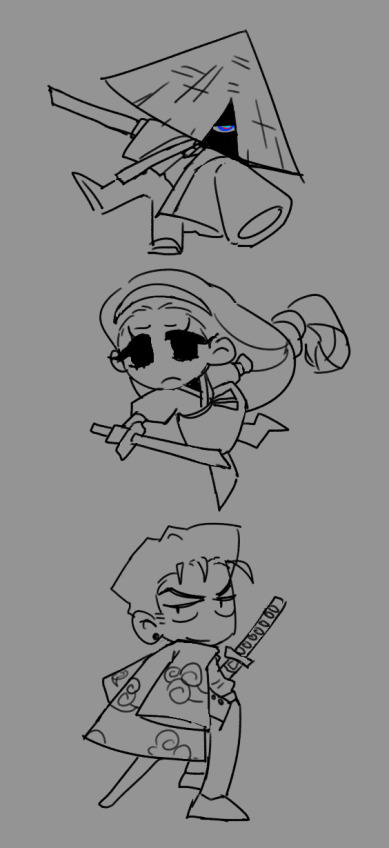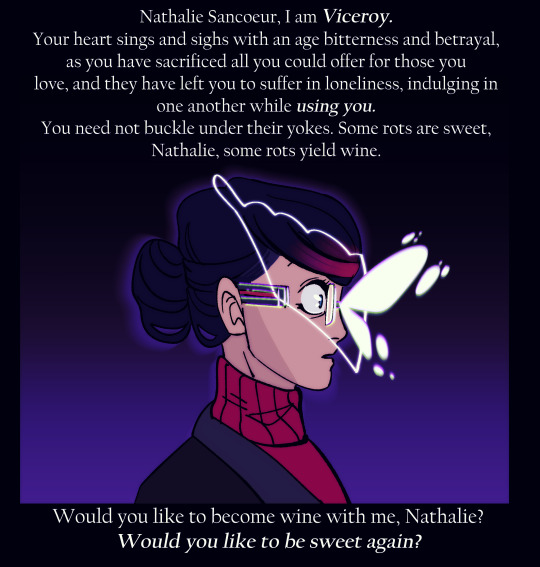#yielding
Explore tagged Tumblr posts
Text
I believe that there is a subtle magnetism in Nature, which, if we unconsciously yield to it, will direct us aright. ― Henry David Thoreau
#henry david thoreau#energy#subtlety#subtle energy#magnetism#subtle magnetism#attunement#tuning in#connection#oneness#feeling#meditation#inner peace#love#life#humanity#nature#yielding#surrender#open heart
19 notes
·
View notes
Text
I crave to become resigned to His will, who hath a right to dispose of us as seemeth unto Him good; though it may lead us to become as spectacles to the world, to angels, and to men. Oh, may the short space of my existence here be spent to the honor of my God; and may I count nothing too dear to part with for His blessed name's sake, that the winding up of my days may be peace.
From The Journal of Ann Branson, a Minister of the Gospel of the Society of Friends (1892)
#Quaker#Quakerism#Society of Friends#gospel#faith#resignation to his will#surrender#yielding#ann branson#peace
8 notes
·
View notes
Text
youtube
Taikiken and The Art of Pushing Hands to Effectively Control Your Opponent in close range combat! Taikiken is a dynamic and powerful martial art that originated from the principles of Yiquan in China. It was further developed and refined in Japan by Kenichi Sawai, resulting in a system that emphasizes natural movement, mental focus, and holistic body alignment. One of the most distinctive aspects of Taikiken is its practice of pushing hands, an exercise designed to cultivate sensitivity, balance, and the ability to respond to an opponent’s energy. When practiced correctly, Taikiken pushing hands can be a highly effective way to understand and control an opponent, making it an invaluable asset for both self-defense and personal development. Historical Roots and Principles Taikiken’s fundamental principles come from Yiquan, an internal martial art created by the renowned Wang Xiangzhai. Yiquan focuses on developing internal power through standing meditation (zhan zhuang) and relaxed, natural movements. Kenichi Sawai encountered Yiquan while in China and brought these teachings back to Japan, eventually founding Taikiken. At its core, Taikiken prioritizes the cultivation of one’s intrinsic energy, also known as “ki” (in Japanese) or “qi” (in Chinese). By learning to harness and direct this internal energy, practitioners develop robust physical strength, a heightened sense of awareness, and a deep mind-body connection. Through this combination of physical and mental training, Taikiken becomes more than just a fighting system: it is a way to refine one’s overall health, vitality, and internal resilience. The Essence of Pushing Hands Pushing hands (or “tuishou”) is a training practice found in many internal martial arts. In Taikiken, pushing hands refines the practitioner’s ability to sense, follow, and redirect an opponent’s force without relying solely on muscular strength. Instead, practitioners use relaxation, proper structure, and timing to control the flow of energy and maintain balance. Sensitivity Training Central to Taikiken pushing hands is the development of tactile sensitivity. By keeping a relaxed, alert body and focused mind, practitioners learn to detect slight shifts in their opponent’s balance and energy. This heightened awareness is what allows them to anticipate and neutralize attacks. Rooting and Alignment In Taikiken, proper body alignment is essential. A strong “root” means the practitioner can ground themselves firmly, preventing an opponent from easily uprooting or throwing them off balance. At the same time, the practitioner learns to stay relaxed and to move fluidly, avoiding the rigidity that often causes tension and weaknesses in one’s defense. Yielding to Overcome The core philosophy behind Taikiken pushing hands is to never meet force with force. Instead, practitioners learn to blend with or yield to an incoming attack. By redirecting the opponent’s energy, the practitioner can guide it away from themselves and take advantage of the opponent’s momentary imbalance. Continuous Flow Pushing hands is not a static exercise. It involves continuous motion and adaptation, mirroring the fluidity of real self-defense scenarios. Practitioners keep their energy smooth and connected, ensuring that they remain adaptable to whatever the opponent may attempt. Controlling Your Opponent When effectively practiced, Taikiken pushing hands grants a distinct advantage: precise control over an opponent. This control arises out of a unique synergy between relaxed power, sensitive listening skills, and strategic redirection: Off-Balancing By detecting an opponent’s shifts in weight distribution, you can gently nudge or guide them off-balance. This technique requires minimal strength but demands refined timing and positioning. Timing and Distance Pushing hands instills an acute sense of timing and distance. In a real self-defense situation, this means you can effectively close the gap or maintain just the right distance to neutralize strikes and grapples.
#Taikiken#pushing hands#Yiquan#Kenichi Sawai#martial arts#self-defense#internal power#zhan zhuang#ki#qi#relaxed power#yielding#balance#rooting#alignment#mental focus#energy redirection#off-balancing#timing#distance#mind-body connection#partner training#mindfulness#meditation#standing meditation#holistic health#personal development#Youtube
3 notes
·
View notes
Text

For anyone curious about Rapunzel's bird form in my thread with @yieldingdreams, it's based on a yellow-footed green dove.
(None of this Freebird design bullshit.)
3 notes
·
View notes
Text
Remember.
Acts 20:35b
“…remember the words of the Lord Jesus, how He Himself said, 'It is more Blessed to give than to receive.'"
The keyword is the word “remember”because it is so easy to forget. The word “give” means yielding, allowing, permitting. This addresses the struggle involved in giving. Jesus did not say it would be more natural to give than to receive, but that it would be more blessed. Blessed because when we give, we are mirroring the character of God.
This week, remember.
Pastor Robin.
0 notes
Text


#i keep forgetting to go back and talk to joyce this playthrough and i am stumbling through the world like an idiot#i made it to the church like wow there's a hole in the world. no idea what this means! thanks soona#sorry if this has already been done#searching for “don't worry kitten disco elysium” didn't yield very useful results if you can imagine#disco elysium#*
4K notes
·
View notes
Text
Surrender is the simple but profound wisdom of yielding to rather than opposing the flow of life Eckhart Tolle
#inspiring#faraz berjis#health#core digestive#guthealth#holistichealth#motivating quotes#gut health#core integrative digestive wellness#eckhart tolle#surrender#flow#yielding
1 note
·
View note
Text


ah. pops them all into my m outh
#limbus company#project moon#lcb#bamboo-hatted kim#jun limbus company#aeng-du#bamboo kim#bamboo hatted kim#i still dont know how to tag him#blade lineage#kurokumo clan#yield my flesh to claim their bones#ants that i stomp on
879 notes
·
View notes
Text

this is the time & this is the place to be alive
#spokeishere#parrotx2#lifesteal#spokeishere fanart#parrotx2 fanart#lifesteal fanart#lifesteal smp#havoc duo#my art#this is real bad but i stared at it for so long that i couldnt sleep last night. so much time for so little yield. yawns#i was debating doing the earlier couple of lyrics too (this chaos this calamity this garden once was perfect) but i didnt have it in me#FOUL BEAST BEGONE FROM MY FILES! also this looks like time magazine but i had to add the border because it felt more exciting to me
683 notes
·
View notes
Text
youtube
Sendo Yasuhiko “ Hua Jin,” often translated as “transforming energy” or “flowing energy,” in Tai Chi. “Hua Jin,” often translated as “transforming energy” or “flowing energy,” is a subtle yet powerful principle in the internal martial arts—particularly in Tai Chi. While “Fa Jin” (explosive power) is frequently showcased for its impressive display of force, “Hua Jin” is its equally vital counterpart. It embodies the sophisticated art of redirecting and transforming incoming energy with grace and fluidity. In Tai Chi, these concepts exist in harmony, with “Hua Jin” serving as both a defensive and strategic precursor to the decisive striking power of “Fa Jin.” 1. Understanding “Hua Jin” as “Flowing Jin” The principle of “Hua Jin” is described as “flowing Jin,” likened to the effortless glide of clouds and the steady, constant movement of a flowing river. Rather than meeting force with rigidity, practitioners learn to harness the energy coursing through their body to guide, dissipate, or redirect an opponent’s power. This is a highly refined skill that depends on sensitivity, relaxation, and whole-body integration. Flowing Clouds and Flowing Water Just as clouds shift shape without losing their essence, and water finds its path around obstacles without losing momentum, so too does “Hua Jin” continuously adapt and respond to an opponent’s movement. The intention is never to stop or resist force but rather to receive and guide it. Whole-Body Coordination “Flowing Jin” is rooted in the entire body—every joint and muscle should be in harmony, allowing energy to pass naturally from foot to waist, then through the spine and arms. This continuous, unbroken flow—also referred to in many Tai Chi classics—ensures that there are no blockages, no abrupt stops, and no wasted motion. 2. The Role of the Eight Gates Jin “Flowing Jin” draws from the Eight Gates Jin (Peng, Lu, Ji, An, Cai, Lie, Zhou, Kao), fundamental energies in Tai Chi practice. Each represents different expressions or directions of power, but all can serve and be refined by “Hua Jin”: Peng (expanding) and Lu (redirecting) most closely illustrate the transformative nature of “Hua Jin.” Peng provides the structural integrity to remain buoyant and connected, while Lu applies subtle redirection. Ji (pressing) and An (pushing) can incorporate “flowing Jin” by smoothly pressing and pushing without hard collisions. Cai (plucking), Lie (splitting), Zhou (elbow), and Kao (shoulder) also utilize the same principle of continuous energy flow, but in more specific applications of short power or close-in techniques. When “Hua Jin” is present, each of these gates or energies transforms seamlessly, allowing you to neutralize and off-balance an opponent. This is done not by forceful confrontation but by a precise and well-timed yield, followed by a guided redirection of the opponent’s own force. 3. Riding the Flow: Application in Combat In practical terms, “Hua Jin” helps you deal with an opponent’s strikes or grappling attempts by “riding” their incoming power like a raft on a river: Yielding and Connecting The moment contact is made, you connect with your opponent’s energy. Instead of fighting it, you let their force enter your structure while maintaining dynamic alignment and relaxation. Through sensitivity (often honed through push-hands practice), you detect the opponent’s angle, intention, and center of balance. Redirection and Transformation Once you feel their energy, gently alter its direction—much like water flowing around a rock. Your body does not become limp; rather, it remains structurally aligned yet flexible, guiding the opponent’s power away from your center. Returning Force As the opponent’s energy is diverted, you maintain a continuous flow, neutralizing their momentum. The stored or redirected energy can then be quickly converted into your own striking force if needed—often seen when “Hua Jin” transitions into “Fa Jin” (explosive release). The beauty of “Hua Jin” is that it allows you to respond with minimal effort while maximizing the opponent’s expended energy.
#Hua Jin#Fa Jin#Tai Chi#internal martial arts#flowing Jin#Eight Gates Jin#push-hands#yielding#energy transformation#Endo Yasuhiko#peng lu ji an#root and stability#softness and power#ultimate in Tai Chi#Youtube
0 notes
Text




buck + babies
#there are probably more but i don’t have a good memory and searching it up yields no results#also let him hold a baby that wasn’t freshly birthed once maybe 😭😭😭#my gifs#911#911 abc#evan buckley#911 1x01#911 2x14#911 6x10#911 6x18
2K notes
·
View notes
Text


top five worst people to be around when theyre experiencing road rage
#xmen#xmen comics#magneto#scarlet witch#quicksilver#erik lehnsherr#pietro maximoff#wanda maximoff#snap sketches#area man proves why he shouldnt have custody of the kids more at 11#anyway hey. i just wanted to draw his stupid car today VJLAEKVJALKJ I HATE THE MAGNACAR THEY SHOULD BRING IT BACK#i probably couldaaaaa rendered this better but whatever it just a silly doodle.. i aint tryna think bout it too hard..#yeah OBVIOUSLY this is inspired by his stupid 'no timeline exists where magneto yields'#type of shit i say on the road everyday but thats normal for where im from#while i was finishing this up my tablet starterd to die and dimmed the screen and i was too lazy to plug it in#i'm simply dealing with the colors ive been dealt with vjELKJVLAKJ it looks fine anyway#alright bye im gonna let my tablet charge. and ima go play rivals#magneto WILL NOT yield... neither on the objective NOR the road...
533 notes
·
View notes
Note
Wait a minute…papa Tom doesn’t seem too hostile towards Nathalie. Or at least she doesn’t seem nervous/blackmailed. Does Tom not know her past allegiances or…is there an alliance in play?

Viceroy employs many in his arsenal, and as far as Nathalie is concerned, Tom is a coworker. :)
#100% the line “some rots are sweet some rots yield wine” is from user ragewrites who made a shitpost poem abt two slugs eating rot#and it has STUCK in my head ever since#dad villain au#my art#nathalie sancoeur#Nathalie is playing both sides#she's not giving Viceroy all the details but enough to make a deal with him#and she's not hiding Gabriel's bullshit from Viceroy but is still working directly under him bc she's still in love with him and Emelie
4K notes
·
View notes
Text







mood: ruined.
#pluto the series#pluto series#pluto series ep7#oonmay#oon x may#mayoon#namtanfilm#namtan tipnaree#film rachanun#gmmtv#gl drama#thai gl#ajkshfkds#oon is like damn what these 2 be up to lmao#may i also stronger than me bc i would not have yielded
525 notes
·
View notes
Text
I'm Batshit Fucking Insane About Yield Under Great Persuasion By Alexandra Rowland And You Should Be Too

Rowland must have stalked me or something, because this book was everything I could have wished for and more.
A horrible gremlin who's also a sad little meow meow for a main character? Check.
Yearning? World Building? Whimsy? Sexiness? Divine intervention in growing the biggest phallic vegetable in history? Check!
The word cock in the opening paragraph? MOTHERFUCKING CHECK
Okay, okay, I've taken a little break from writing this, because the urge to keysmash was growing very strong indeed. I think the energy drink has mostly worn off now, so here's the less feral part of the review:
Yield Under Great Persuasion is an achingly tender book.
Its main theme is allowing happiness into your life even if it makes you vulnerable. It's protrayed with an exceeding gentleness and subtlety, yes even in the parts were an actual mother goddess shows up to tell the main character, Tam, to knock it off.
Tam has been awful to his on and off lover Lyford for years now, ostensibly over a childhood accident, but really because Tam is too much of a cynic to allow himself to be loved. His quest for forgiveness and to overcome his bitterness is both realistic and deeply meaningful.
Rowland's incredible sense of humour and daring to be delightfully weird is the cherry on top of a story I devoured in about six hours.
Run, don't walk, to read this book.
@ariaste
#book rec#cozy fantasy#yield under great persuasion#alexandra rowland#queer fantasy#queer romance#lgbt fantasy#lgbt romance#book recommendations#book review
275 notes
·
View notes